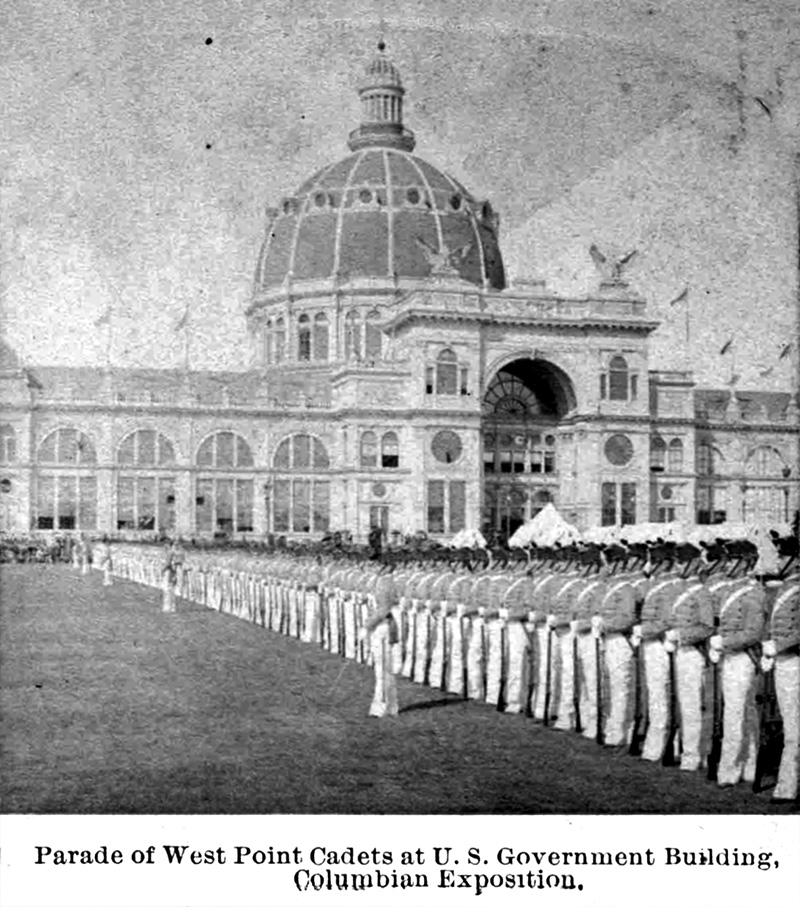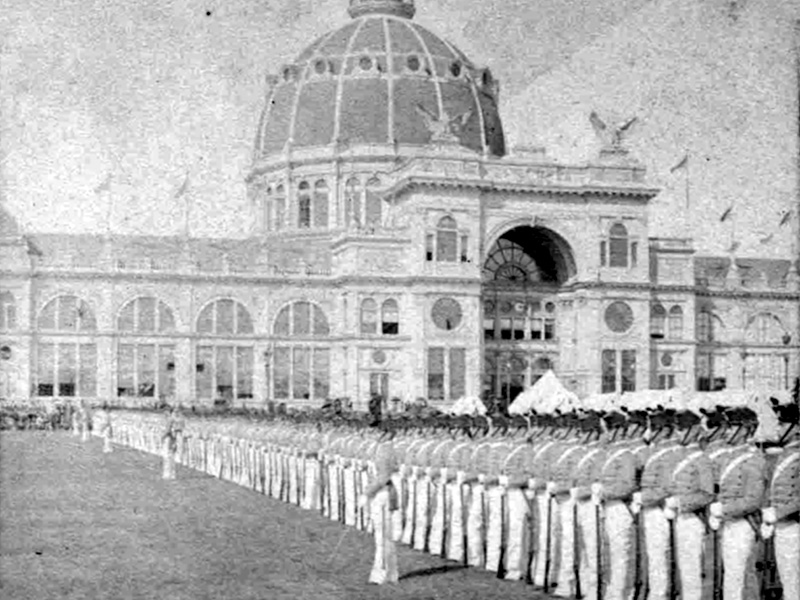In honor of Veteran’s Day, let’s look back to the summer of 1893, when the 300 young soldiers camped on the grounds of the World’s Fair in Chicago.

“This encampment of the national cadets at the fair is by no means boys’ play for them,” the Chicago Herald explained to its readers. “The work is nearly as hard as it is in school.”
W. W. Denslow, who later illustrated The Wonderful Wizard of Oz, illustrated a scene of an “Evening Dress Parade” by the West Point Cadets for the Herald, shown here:
“The camp of the West Point cadets was constantly surrounded by great throngs of interested spectators. Many of them were young women, all in a flutter of excitement over the appearance of the boys,” reported the Tribune, which described the cadets as “handsome soldier boys in gray uniforms and full of frisky enthusiasm.”
The lure of other nearby attractions also may have tempted at least some of the 300 young men encamped on the fairgrounds. “There are perils in the Midway Plaisance for the cadets,” warned the Tribune, noting the military regulations stipulating that “not only will any cadets guilty of intoxication be dismissed, but that any cadet seen with liquor in his possession shall suffer the same penalty.”
Chicago entertained the young soldiers with a garden party, afternoon tea, grand balls, and other receptions during their stay at the World’s Fair, and no reports of bad behavior by any cadet surfaced during the ten-day encampment on the fairgrounds.
The West Point Cadets departed the Columbian Exposition on a quiet Sunday evening to head back to New York. That morning, Buffalo Bill and his rough riders came over from their “Wild West” show and paraded past the camp of the young soldiers in Government Plaza to say farewell.
SOURCES
“Men of West Point” Chicago Daily Tribune Aug. 19, 1893, p. 9.
“In a Flutter Over Young Soldiers” Chicago Daily Tribune Aug. 20, 1893, p. 3.
“Commend the Cadets” Chicago Herald Aug. 27, 1893, p. 25.
The Vanishing City, a photographic encyclopedia of the World’s Columbian exposition. Chicago, Laird & Lee, 1893.

